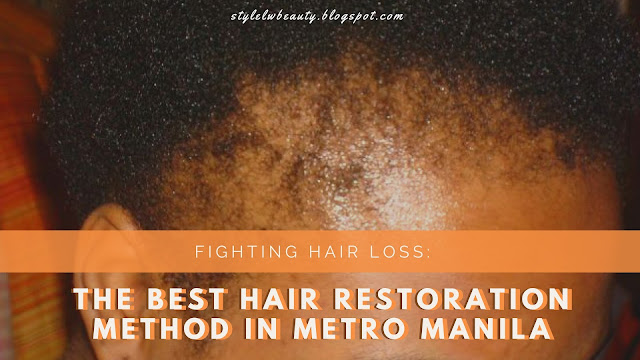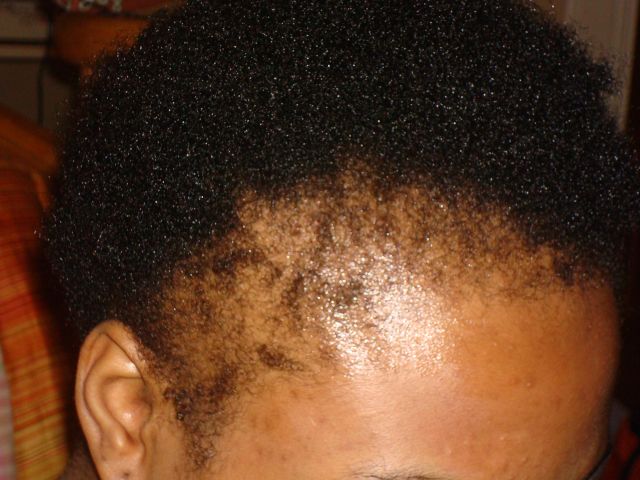Previously we’ve talked about Alopecia or more commonly known as hair loss, its symptoms, if there are a cure and treatment, and also how to cope with it. As someone with alopecia myself, I feel you all and that’s why I share my sentiments in this article.
Millions of us suffer from alopecia and including both men and women, and if you’re someone who suffers from it, well that makes both of us. I myself tried to save my thinning hair because people kept noticing my hairline. I know, it’s bothersome even if you try to laugh it off—hell I’m even the joke of family gatherings and I just hide my pain.
I tried medications and used castor oil for my hair. They didn’t work for me so I just accepted my fate.
Previously:
ARTICLE 1
This is unproven but it makes sense that it might be a genetic disorder. My dad is bald, so is my uncle and older brother, even my girlfriend gets worried. I do appreciate the support she gives me so I just learned to accept it.
If you want to preserve your hair, don’t throw in the towel just yet. Although I myself can’t afford it, I’m happy to tell you that surgical treatments like hair transplant are possible and it works very well. Now I’m not bald shaming here, you don’t have to do this if you feel that acceptance is better. Let’s get started by looking at different hair transplant methods that are viable.
What does hair transplant do?
Naturally, you’ll be asking this. Surgical procedures can tend to give people some a sense of uneasiness over what may happen if the hair transplant procedure goes awry apart from wondering if the money you’ll be spending on it is worth it, and from whom should you get the treatment.
Embed from Getty Images
Hair transplantation is a surgical process wherein hair follicles are taken from a “donor site” or is the healthy part of your head or scalp (usually at the back of the head) that has genetic resistance to balding. The follicles are then transplanted to a “recipient site” or your bald spot. The good news is that it is not really that invasive meaning there’s no huge incisions or cuts. Surprisingly, the procedure is also rather painless as people testify. It’s not only for your hair, but transplantation can also be done to your eyebrows, eyelashes, and even your beard and chest hair.
This explanation is hair transplantation in general but there are two types of treatment that are fairly common nowadays and you ought to give them a look. The procedures in question are the Follicular Unit Transplant and Follicular Unit Extraction. We’ll abbreviate them as “FUT” and “FUE” and we’ll give them in-depth explanations.
Follicular Unit Transplant (FUT)
FUT is also known as Strip Harvesting and it is the traditional method of hair transplantation and also the most common method of removing hair follicles from the donor site
What happens here is that your surgeon will harvest strips of posterior scalp in areas with good hair growth (healthy hair). A scalpel with one to three blades would be used to remove strips of hair that have tissue from the “donor site”.
And speaking of scalpels, there would be incisions to get the follicles out intact. While the wounds close up, they will dissect the individual grafts from the strip and remove excess tissue while taking care to avoid damaging the follicular cells.
For grafting hair follicles; micro blades or fine needles would be used to puncture the sites wherein the grafts would be embedded. The patterns of which they are placed would look natural and realistic as the area and density on which the grafts will be placed are predetermined.
You might feel some discomfort since thin linear scars would be present in the donor areas though it would be covered by the patient’s hair. Additional medication may be given to counteract the slight pain.
Recovery time would be around two weeks and stitches or staples must be removed by medical personnel, although sub-cuticular sutures that melt away by themselves can also be done.
FUT in action below:
Follicular Unit Extraction (FUE)
Also known as FUE Harvesting, compared to FUT this involves removing individual follicular units rather than resorting to an incision to get a strip of scalp and follicles. That means there’s much less pain involved as local anesthesia would be applied. Follicular units that have 1-4 hairs would be removed via “punches” that are 0.6mm-1.0mm small in diameter.
For grafting, it‘s still like what FUT does; puncture and graft.
Do take note that an FUE treatment is very time consuming and you could arrange for it to be administered in a single long session or in multiple short sessions. Plus side about it is that it doesn’t really hurt and you can continue going to work like nothing happened because of the minimal scarring. It’s just much more expensive than an FUT transplant so weight your options well.
WARNING: You might feel a bit uncomfortable watching this. It’s a video of the actual grafting process.
If it weren’t for the anesthesia, that looks like it might’ve been mighty painful.
Post Operation for Both Transplantation Method
In some cases, side effects may occur and the most common form is shock loss.
This occurs when newly transplanted hair follicles fall out during the first week of post operation. But after 2-3 months new hair would begin to grow and eventually thicken.
So there we have it. Those are the two common transplantation methods that are currently available in our country. So now where would you go for a hair transplant in Manila? There are lots of specialists and centers to choose from. Would you take chances if it meant affordability? Or would you only settle for the best in the field?
If I had the money, personally, I’d settle for the real professionals; at least I’d know that I wouldn’t have to worry when having a transplant.
I know one expert though and it’s Dr. Arambulo (Julieta Peralta Arambulo, MD) who’s a member of the International Society of Hair Restoration Surgery or ISHRS. You’ll see her at the Asian Hair Restoration Center in Pasig City. You can see her in an interview here: https://www.youtube.com/watch?v=QE9ybI4m620 (it’s in Filipino. I would’ve translated and transcribed it if I had more time.)
And I just read about some new technological advances with hair restoration which are something to look forward to. And those are stem cell discovery in hair follicles and also hair cloning. Should it be approved then I think we’ll have better cost-efficient methods.
There is hope!










